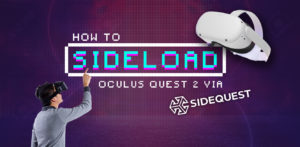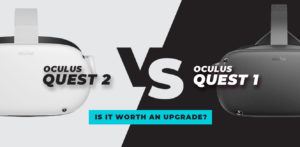Table of Contents
- What are the minimum requirements for a VR PC?
- How to use minimum requirements
- Are the recommended minimum requirements for a VR computer good enough?
- What CPU is best for VR?
- Recommended CPUs for VR
- Which graphics cards are best for VR?
- Recommended Graphics Cards for VR
- What other parts are important for a VR computer?
- How many USB ports do I need for the Oculus Rift?
- Tips for building a VR computer:
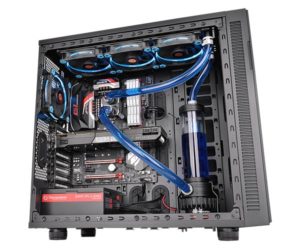
Setting up your own VR computer you will require at least a little research, the requirements are very high and if you don’t get all the right parts you will be dead in the water. Any ‘VR-Ready’ PC will work but they can range from a few hundred, to a few thousands of dollars. You may want to know what parts go into the system you are getting and you may even want to build it yourself. Building a computer can seem daunting at first but it’s a great way to save money and allows for customization. With a Philips head screwdriver, a few Youtube tutorials, and a bit of care you can easily do it at home. First we will cover the minimum requirements and what they really mean.
What are the minimum requirements for a VR PC?
| Oculus Rift: | HTC Vive: |
|---|---|
| Graphics Card: NVIDIA: GTX 1050 Ti/GTX 960 | AMD: RX 470/R9 390/R9 290 CPU: Intel i3-6100 | AMD FX 4350 Memory: 8GB RAM USB Ports: 1x USB 3.0 port plus 2x USB 2.0 ports (3x USB 3.0 recommended) OS: Windows 10 64 bit | Graphics card: NVIDIA: GTX970 | AMD R9 290 CPU: Intel i5-4590 | AMD FX 8350 Memory: 4GB RAM USB port: One USB 2.0 Operating system: Windows 7 SP1 |
How to use minimum requirements
This is not quite the end of the story. When writing minimum requirements, manufacturers refer to the most recent hardware by default, but an old Intel 4th generation i7-4790K CPU will slaughter with a shiny new 6th generation i3-6100 one. To find out if your CPU or Graphics Card is fast enough you may need to compare it to the stated minimum requirement. Websites like User Benchmark let you compare parts easily, just check what you have against the minimum spec and make sure its “effective speed” is at least as fast. If you already have a computer just download Steam VR Performance Test from the steam store. Many users find it a more accurate test than the Oculus version.
Are the recommended minimum requirements for a VR computer good enough?
Now that we’ve covered what you need, let’s talk about what you want. Sure you could pick up a second hand R9 290 and pair it with an i3-6100, but it might only handle the most basic experiences. You will have to turn all the pretty graphics settings down and before to long new games will come out with higher requirements that will be beyond it’s capabilities entirely. Another point to remember here is the more advanced something is, the longer it will last. 2 years from now a GTX 1080 will still be playing the newest games with the graphics turned up, while a GTX 1050 will be struggling to even make the grade. Of course at the end of the day it all depends on your budget, but it’s often a wiser investment to wait for one more paycheck, rather than spending then cash today on a bottom end system.
Why are Minimum Specs so High for VR?
The thing with VR and performance is cut off points. You can play traditional games at low and/or inconsistent frame rates without any real problems. The current consoles even run many games at 30 frames per second (FPS for short). During the development of modern VR, however, 90 FPS was found to be the magic minimum number required to avoid motion sickness for most people. Not close to 90 FPS, or 90 FPS most of the time, but a constant 90 FPS all the time. If your computer reaches 100% capacity (the cutoff point), it will start to drop frames. This means the visual information won’t match your physical movements, and you will become very sick, very quickly. So, the old story about your friend getting Battlefield to work on an old laptop he found at a garage sale, doesn’t apply to VR.
What CPU is best for VR?
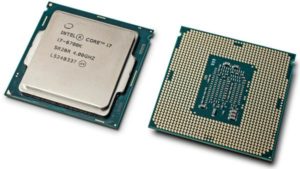 If you have any sense at all (and you don’t do a lot of data processing) then you should ignore the Intel i7 range and go straight for the i5s. Only 8% better performance for a 50% price jump just isn’t worth it. Intel i7 chips mostly just have more cores and are really designed for workstations. For example: a $1800 6950X (10 cores) is actually slower than a $235 6600K (4 cores) when it comes to gaming. The entire range of AMD CPUs suffer from the same problem. While AMD chips are a lot cheaper, they just don’t perform when it comes to gaming. Smart money is on the 6600K/7600K. Check back here later though as AMD is set to shake things up in 2017 with their new Ryzen CPUs. We will update this list once all dust has settled.
If you have any sense at all (and you don’t do a lot of data processing) then you should ignore the Intel i7 range and go straight for the i5s. Only 8% better performance for a 50% price jump just isn’t worth it. Intel i7 chips mostly just have more cores and are really designed for workstations. For example: a $1800 6950X (10 cores) is actually slower than a $235 6600K (4 cores) when it comes to gaming. The entire range of AMD CPUs suffer from the same problem. While AMD chips are a lot cheaper, they just don’t perform when it comes to gaming. Smart money is on the 6600K/7600K. Check back here later though as AMD is set to shake things up in 2017 with their new Ryzen CPUs. We will update this list once all dust has settled.
Recommended CPUs for VR
| Category | CPU | Price |
|---|---|---|
| Budget | i3-7100 | $119 USD |
| Performance | i5-7600K | $235 USD |
| Monster | i7-7700K | $349 USD |
What is the difference between K and non-K CPUs?
Some people say you should only go for the K version of a CPU if you plan to overclock. While the K does represent an unlocked multiplier for simple overclocking, it’s not the only difference. Take the 7600 for instance. Out of the factory the 7600K has more power than its non-K brother for a measly few dollars. Couple this with the fact that overclocking is very safe and simple nowadays and the choice should be obvious (get the K version).
Which graphics cards are best for VR?
Graphics cards are the single most important part of any gaming rig. AMD is losing here again but not quite as badly. The RX 480 wins in the budget category but until their new cards come out they have nothing to compete at the mid and top end. Some cards come in different VRAM versions, 4GB and 8GB for example. VRAM is not really important for VR as it only comes into play at very high resolutions (both the Rift and HTC’s Vive have a relatively low resolution of 2160 x 1200). So for now you are unlikely to see any benefit at all. Keep your money, unless you plan to play Shadow of Mordor on a 4K screen.
The Best Graphics Card under $200
Recent software updates have actually lowered the minimum requirements for the Oculus Rift. Amazingly this now means you can get a VR capable GPU for as low as $140. In the green corner with have the brand new GTX 1050 Ti and for AMD fans the RX 470 now does the job. Being this close to the bottom end means you will have problems in some games and we also recommend you shell out a few extra bucks for a factory overclock. Of the two, the RX 470 is a little more expensive but has a lot more power per dollar.
NVIDIA’s GTX 1080 is the latest and greatest, a monster of a card with a monster price tag. But it’s set to be knocked out of top spot in early 2017 with the release of the 1080 Ti. Either way at 50% more expensive for a 20% jump in power its little brother, the 1070, is much better value for money. Not only is the 1070 faster than the legendary 980 Ti but like all 10 series cards it has special tech that improves performance in VR (See SMP box-out). Just remember not to bother with ‘Founders edition’ cards, they cost more and have less power. These cards are only for those who like to be first, and it’s too late to be first.
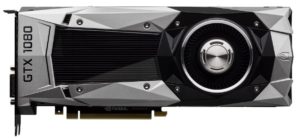
Recommended Graphics Cards for VR
| Category | Graphics Card | Price |
|---|---|---|
| Budget | RX 480 4GB | $190 USD |
| Performance | GTX 1070 | $399 USD |
| Monster | GTX 1080 | $599 USD |
How does Simultaneous Multi-Projection(SMP) work?
The main reason VR needs such a beastly computer is that the GPU has to create the entire virtual world twice, once for each eye. Enter NVIDIA’s new secret weapon, Simultaneous Multi-Projection. This technological wizardry lets the GPU create the world once, then use all of that information to draw the images for each eye simultaneously, as the name suggests. NVIDIA is claiming this could mean up to double the performance in VR. The catch is that developers will need to program it into their games. It’s still early days but SMP could be the must have technology for VR.
What other parts are important for a VR computer?
System builders love to fuss over the other various bits that make up their machines but the truth is it doesn’t really matter much. Websites like PC Part Picker are great for finding out what parts you need and making sure they are compatible with your chosen CPU and Graphics Card. Motherboards are all about features; Wi-Fi, inbuilt sound, overclocking etc. RAM is even less important; the difference between the fastest and slowest RAM is around 1%. 8GB is fine but 16GB is good if you leave web browsers or other apps open while you VR. As far as power supplies go, good enough is good enough though you might want to avoid really cheap models as they can cause power spikes and damage your computer. Just select whatever parts are compatible and have the features you want.
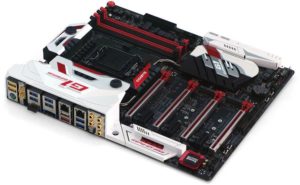
How many USB ports do I need for the Oculus Rift?
The Oculus headset requires USB 3.0 but you can have the sensor and controller plugged into USB 2.0. Sometimes this works fine but it can cause problems. Ideally you want USB 3.0 ports all round. The Touch controllers require another USB for the extra sensor. Any additional sensor will also require another USB but here USB 2.0 is recommended.
Tips for building a VR computer:
Use sites like PC Part Picker to find out what parts are compatible with your CPU and Graphics Card.
Anything over 8GB of RAM won’t help with benchmarks but it’s always good to have more for multi-tasking.
Desktop HDDs are fine but Laptop HDDs running at 5400rpm and have caused issues for some users. Make sure your VR laptop has an SSD.
Z170 / Z270 Motherboards for Intel CPUs are best for gaming and overclocking.
Use sites like Cooler Master’s Power Supply Calculator to check how many watts you need.
VR is very demanding so good cooling is important, consider a high-end CPU cooler and extra case fans.
The Rift uses Digital USB Sound which bypasses any Soundcard you might have. So it’ll just be wasted if you plan to use the built in headphones.
Once you have your shiny new VR computer up and running you may want tune it for extra performance. Computers can be ‘overclocked’ to get extra power without spending a dollar and when it comes to VR you need all the power you can get. In the next section we will get a bit more advanced and cover the basics of overclocking.
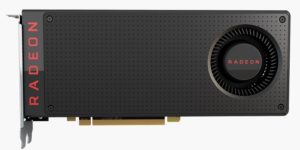 Recent software updates have actually lowered the minimum requirements for the Oculus Rift. Amazingly this now means you can get a VR capable GPU for as low as $140. In the green corner with have the brand new
Recent software updates have actually lowered the minimum requirements for the Oculus Rift. Amazingly this now means you can get a VR capable GPU for as low as $140. In the green corner with have the brand new 

